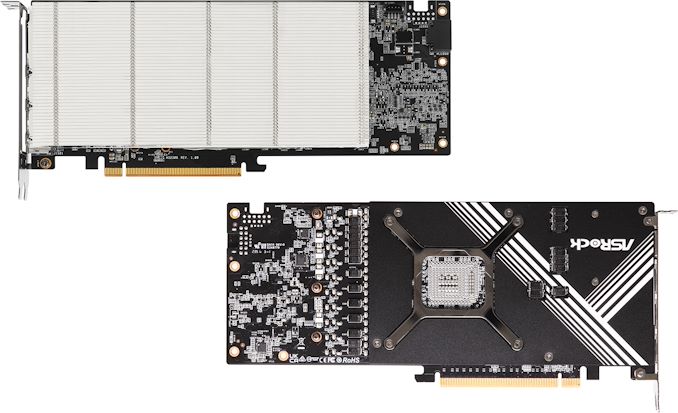As sales of GPU-based AI accelerators continue their upward trajectory, the immense demand for these cards has led some server builders to explore unconventional avenues to acquire the hardware they need more affordably. While both NVIDIA and AMD offer official card configurations for servers, the high price tags attached to these cards pose a significant financial burden that some customers either can’t bear or prefer to avoid.
In response, these groups have been increasingly purchasing consumer graphics cards. Despite certain limitations, these cards cost only a fraction of what a “proper” server card would. This week, ASRock has helped mitigate one of those limitations for aspiring AMD Radeon users by introducing a set of compact, passively-cooled Radeon RX 7900 XTX and RX 7900 XT video cards specifically designed for server environments.
Unquestionably, ASRock’s AMD Radeon RX 7900 XTX Passive 24GB and AMD Radeon RX 7900 XT Passive 20GB AIBs are genuine graphics cards featuring four display outputs and powered by the Navi 31 graphics processor (with 6144 and 5376 stream processors, respectively). They are capable of rendering graphics and handling both gaming and professional applications. With TGPs of 355W and 315W respectively, these cards are not underclocked compared to their desktop counterparts. However, unlike typical desktop cards, the coolers on these cards are dual-slot heatsinks devoid of any fans, designed for use with high-airflow forced-air cooling systems.
ASRock’s passive cooler is a standout component; it’s far more than a basic aluminum heatsink. Below the fins, ASRock employs a vapor chamber and multiple heat pipes to efficiently distribute heat throughout the sink. Even with forced-air cooling in racked servers, the heatsink needs to be highly effective to maintain a 300W+ card within safe operating temperatures using only a dual-slot cooler – especially when up to four of these cards are installed side-by-side. To further accommodate server integration, these cards come with a 12V-2×6 power connector, a first for the Radeon RX 7900 series, streamlining installation and reducing cable clutter.
What primarily drives the demand for these cards is their memory configuration. With 24GB for the 7900 XTX and 20GB for the 7900 XT, these cards offer half as much (or less) memory than what is available on high-end professional and server cards from AMD and NVIDIA. Yet, AMD remains the only vendor offering consumer cards with this much memory for under $1000. For a memory-intensive AI inference cluster on a budget, the most affordable 24GB card becomes an extremely attractive option.
On the other hand, ASRock’s Radeon RX 7900 Passive cards are distinguished by what they can’t do compared to AMD’s official professional and server cards: tasks such as remote professional graphics or other applications requiring GPU partitioning. These components are designed with a singular focus – artificial intelligence – and are intended to process vast amounts of data. For this purpose, their passive coolers are adequate, and the absence of ProViz or VDI-oriented drivers ensures AMD retains these profitable markets for its other products.






